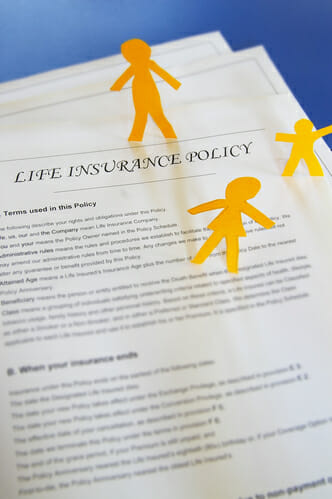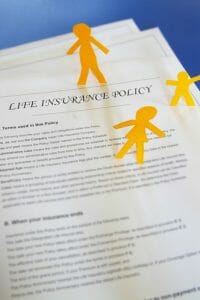{Read in 10 minutes} A lot of people don’t realize that when they die, the distribution of their assets may be controlled by other documents besides their Will. Most commonly, people have life insurance or retirement accounts that they’ve either acquired themselves or through an employer. When acquiring such assets, clients very often are presented with a beneficiary designation form to complete. Unlike assets that do not name a beneficiary and are subject to Probate, any asset that names a beneficiary passes automatically to that named beneficiary, regardless of the terms of the Will. Therefore, it’s really important to make the proper choices as part of your overall estate planning when completing these forms.
Retirement Accounts
When dealing with retirement accounts, there are lots of different types and options, but for the purposes of this article I’d like to focus on two particular types of retirement accounts: Those on which the client has already paid income taxes, and those on which the client has not yet paid income taxes.
Most people have retirement accounts that fall into the latter category. For example, many working people have deferred a portion of their salaries into a retirement account, such as a 401k or an IRA, by making a pre-tax contribution from their paychecks. The thought behind this sort of planning, which can be very effective, is that you will defer paying income taxes on these funds until you retire. Once you retire (or turn a certain age) you will begin to withdraw the funds. You will then pay income taxes on the funds as you withdraw them, but you will be paying much less income taxes, because, as a retired person, you will have a much smaller gross income.
For purposes of an estate plan, the retirement account is something that is treated differently. Most inheritances that a beneficiary receives from an Estate comes completely free of income tax. Example: If my parent or aunt or uncle were to leave me $5,000 or $500,000 in their Will, or as a beneficiary of their life insurance policy, usually such an inheritance would pass to me without any resulting income tax. I would get every penny of that gift.
The same is not true for retirement accounts that the client funded with pre-tax dollars. Just like the deceased would have had to pay income taxes on the funds when he or she withdrew it in retirement, any funds that are available to the beneficiaries are subject to income taxes when the beneficiaries withdraw them. Depending on the value of the account, the amount of taxable income that the beneficiary receives in any one year can be substantial. Fortunately, beneficiaries have a lot of options as to how to receive this taxable income:
-If the beneficiary is a surviving spouse, they can receive the inheritance into a rollover IRA and defer taking required distributions from the account until they retire or reach a certain age—potentially greatly minimizing the total amount of income tax paid. Most surviving spouse beneficiaries choose this option.
-If the beneficiary is someone other than a spouse, they can put the funds into an inherited IRA. The inherited IRA defers taxation, but not indefinitely. The beneficiary is required to take minimum distributions every single year, based on their life expectancy; however, the beneficiary can spread the tax bill or the tax liability out over several calendar years. Most non-surviving spouse beneficiaries choose this option.
-The beneficiary can take it all immediately as a lump sum. If the beneficiary does this, they realize the full amount of taxable income immediately in that calendar year. Depending on whether the beneficiary has substantial other income or substantial available deductions, that could greatly affect the beneficiary’s overall tax bill for that year. Beneficiaries considering this option should first consult with their tax preparers, not only about the overall income tax liability, but also to check whether they need to make an estimated payment of income tax upon receiving a lump sum distribution.
So what is my advice to estate planning clients who have substantial savings in their retirement accounts? In general, the spouse is the preferred beneficiary of these funds, if they are married and unless they plan to disinherit their spouse. Another great person to include here would be one or more minor beneficiaries. For example, if a client has grandchildren and there are other ways to provide for the client’s own children, skipping the children as the named beneficiary and naming a younger grandchild may make a lot more sense tax-wise. The grandchild beneficiary has a much longer life expectancy, and can therefore spread out the tax bill over a larger number of years. This also teaches younger family members the benefit of saving for retirement and gives them a good foundation toward their own retirement savings.
For clients who are charitably inclined, the beneficiary designation form on a retirement account is a great place to make a charitable bequest. Rather than leaving it as a percentage or a stated cash sum in their Will, naming a charity as a beneficiary here offers a significant advantage: the charity pays no income tax. So, if I name a charity as my beneficiary, the charity gets 100 cents on the dollar of the account—far better than any other individual beneficiary would otherwise receive. Making bequests to individuals from probate assets in a Will and making charitable bequests from pre-tax dollars in a retirement account is smart tax planning.
Finally, there’s very often a box to check on a beneficiary designation form that allows you to leave funds to your Estate. In general, this is the last resort. If you choose this option, your Estate will be subject to the income tax—which means that your Estate must take out all of the income within five years, and recognize all the taxable income and pay the income taxes all at once. You should try to avoid this if you can, as Estates often face higher percentage income tax brackets than its individual beneficiaries.
The other type of retirement account, aside from accounts on which the client has already paid income taxes, is the type of account where clients have already paid the taxes. Largely, this group consists of Roth IRA accounts. In a Roth IRA, the client has made a post-tax contribution to the account (or otherwise converted pre-tax dollars into post-tax dollars). When the client withdraws funds later on in retirement, the distributions are not taxed as income to the client. Similarly, the beneficiary that inherits any portion of a Roth IRA will have no income tax consequences—so clients should feel free to leave these funds to whomever they wish.
Life Insurance Policies
Life insurance policies are a fantastic way to leave funds to beneficiaries. With some very few exceptions, the proceeds of a life insurance policy are not income taxable to the beneficiary. Life insurance policies are often available through employers, or sometimes clients will go out and purchase life insurance to provide for a specific need, such as parents with young children, or a couple purchasing a home who wants to ensure continued mortgage and maintenance payments if one of the parties were to die.
Because life insurance proceeds are not subject to income tax, one does not need to be as wary about leaving the life insurance proceeds to one beneficiary or another. Also, a client should not be wary about naming their own Estate and checking that box that says “my Estate” as the beneficiary. Why? Because it is not taxable income, there’s no disadvantage to paying through your Estate other than the increased amount of time it will take to collect the policy.
There are pros and cons for a client to naming their Estate as a beneficiary as opposed to naming one or more individual beneficiaries. The largest con is the time it will take for the beneficiary to receive the funds if a client names the Estate. Many clients wish for beneficiaries to receive funds immediately upon their death (or shortly thereafter) to help with expenses such as funeral or ongoing family maintenance. When a client names the Estate as a beneficiary, it is subject to probate and the Executor must first collect it before distributing it to beneficiaries. It may also be subject to claims by the Estate’s creditors. For a review of assets that are subject to probate versus those that pay directly to named beneficiaries, please see my prior blog post here. However, some clients may wish for the Executor to collect the insurance proceeds and distribute them in accordance with their Wills. An example of this would be a client who has young beneficiaries, such as children, grandchildren, nieces/nephews, etc. Very often clients write trusts in their Wills for these beneficiaries until they reach financial maturity at an age the client finds comfortable. If the client were to name these young beneficiaries directly on the designation form, the beneficiaries would receive these funds regardless of their age (if they are under 18, the insurance company may need to pay the funds into Court and the beneficiary will receive them at age 18 – regardless of whether or not they are mature enough to handle the inheritance). Therefore, many clients choose to name their Estate as the beneficiary; their Executors will receive the funds and place them into the testamentary trusts for later payout in accordance with the client’s overall plan.
In conclusion, a beneficiary designation form can have a significant impact on a client’s overall estate planning. I tell clients that they should review their beneficiary designation forms once every three or four years, just to make sure that they are aware of who the beneficiaries are. It’s also important to make sure that they have named both primary and contingent beneficiaries, and to review them with their lawyers as part of creating an overall estate plan. Given the amount of funds that many people have accumulated in their retirement accounts, this is a very significant piece that they should not overlook.


